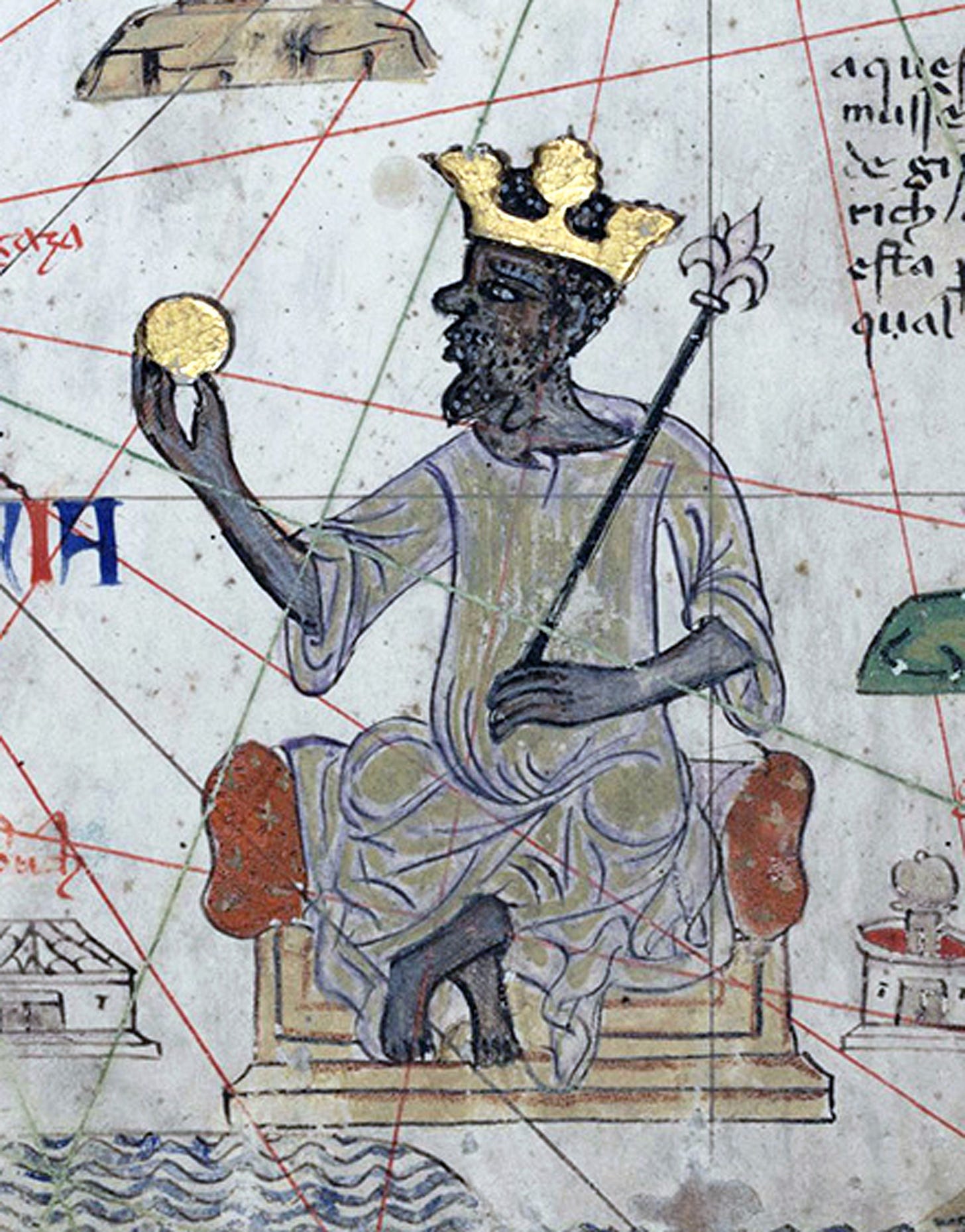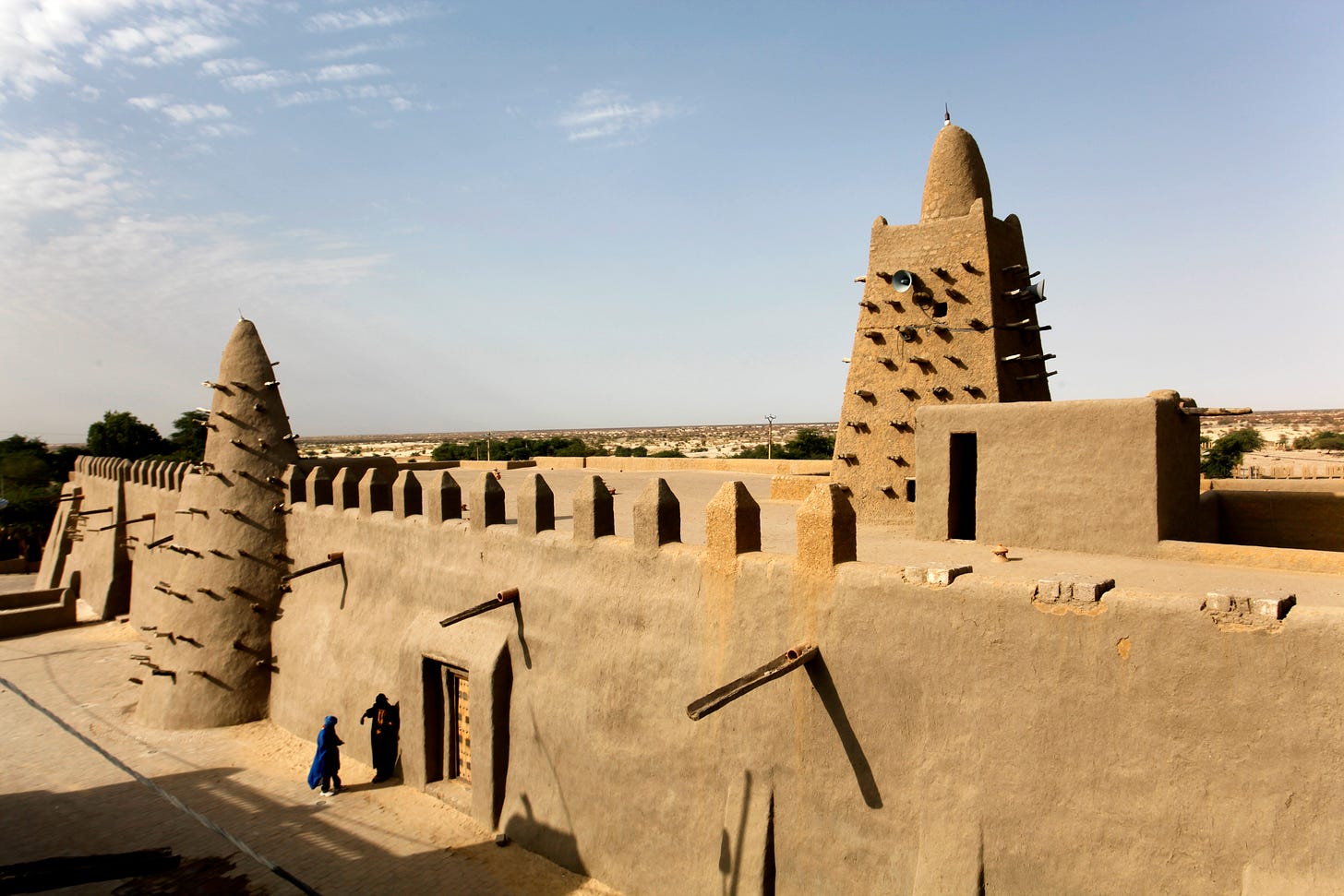The Fascinating History of Mansa Musa and Ancient Timbuktu
Mansa Musa was the king of the Mali empire and in his reign, Mali became an African powerhouse and included the countries of Senegal, Burkina Faso, Niger, and the Ivory Coast.

Who Is the Richest Person in the World?
Pat, comes your reply; Bill Gates, Warren Buffet or Jeff Bezos.
Wrong. You think again. You rack your brains harder and go a bit further in the past.
Augustus Caesar, Akbar I, or William the Conqueror.
Again wrong. All these guys are way off the mark when it comes to wealth. This single guy I am referring to beats all of them combined many times. Such was the richness of this little-known African king who ruled a large part of Africa from the famous city of Timbuktu.
And the source of his immense wealth came entirely from gold mining and the salt trade. Nobody still knows his real worth, but many sources quote a net worth of $400 billion in today’s times. Whew! that is a lot of money!!
His name is Mansa Musa (1280-1337). He was the king of the Mali empire, and in his 25-year reign, the Kingdom of Mali became an African powerhouse. It included the current-day countries of Senegal, Mali, Burkina Faso, Niger, Guinea, and the Ivory Coast.
Mansa Musa Was a Charismatic Ruler
Musa was born in 1280, and the word Mansa means ‘Sultan’ in the native language of Mandinka spoken in the region.
Under his charismatic rule, the kingdom expanded like anything, and soon it stretched for over 2,000 miles, from the Atlantic Ocean all the way to modern-day Niger. With such an area came enormous gold mines and a very lucrative salt trade which were one of the main driving factors of his wealth.
At its peak, the Malian empire he ruled was an international center for Islamic study. Students studied Islam, law, history, geography, astronomy, and many other subjects. Many of them also helped spread Islam throughout western Africa.
And the legendary, fabled gold city of Africa under Mansa was his capital Timbuktu. Mansa fashioned it in an ancient center of learning and trade. Due to its strategic location, ancient Timbuktu grew to be quite wealthy. The stupendous fame of its gold-filled minarets and mosques, including the famous Djinguereber Mosque commissioned by Mansa himself, spread far and wide.
It was at this point the quintessential phrase “going to Timbuktu’ came into existence. In fact, the name Timbuktu in French, “Tombouctou,” is often used to describe a place far, far away that is too dangerous to reach.
And for a good reason, as for centuries, Arab and European explorers heard stories about Timbuktu and tried to visit the city. The long and dangerous trek proved dangerous for most of them, and many perished on the way to the city.

The Gold Crash of Cairo
Mansa came into prominence due to the gold crash of Cairo. This happened when Mansa Musa, a devout Muslim, decided to go on a pilgrimage to Mecca in 1324, passing through the Sahara Desert and Egypt.
Ibn Kathir, a writer of those times, writes that the king traveled with an entourage of 60,000 men. He took his entire royal court, officials, soldiers, griots (entertainers), merchants, camel drivers, and 12,000 slaves along with a long train of goats and sheep for food.
And along with this immense caravan were hundreds of camels, carrying thousands of pounds (72000 pounds as per some reports!!!) in pure gold. It would have been a dazzling sight even to think about it.
And on reaching Cairo, he distributed so much gold among the poor that the price of gold plummeted in the region for more than ten years wrecking the economy.
As Ibn al-Dawadari, a writer says.
“They had so much gold with them that the rate of gold fell by two dirhams in each mithqal and the price of gold, which rarely sold for less than 25 dirhams before Mansa Musa’s visit, never exceeded 22 dirhams after his visit. Gold became cheaper than dirt.”
Mansa Musa left such a memorable impression on Cairo that al-Umari, a traveler who visited the city 12 years after Mansa’s visit, recounted how the people of Cairo still remembered him and notably all that glittering gold that filled the markets at that time.
Today’s Timbuktu Is a Different Place Altogether
Timbuktu, the city of gold, an ancient learning center, is slowly turning to dust. Corruption, the apathy of city officials, and the relentless Sahara are to blame for it. Adding to it, the Islamic rebels linked to Al-Qaida have made traveling to the city a very dangerous journey.
The people living there either adapted or left the place altogether, and the desertification for more than half a century has taken its toll on the city’s watering holes and its treasures of learning which are fast getting smuggled out of the country by dubious traders.
Yes, today, Timbuktu is freed from the rebels and militants who had captured it in 2012, and the city is in recovering and rebuilding mode. It is also marked as UNESCO World Heritage Site. Scholars have again started piecing together the African history that once filled vast libraries in the city’s heyday. Things have gradually started improving bit by bit.
But there is still a long way to go before Timbuktu rightly takes back its legendary place on the world map as the fabled city of gold, as it was created by Mansa Musa. Time is the greatest destroyer, leveler, and healer, and only time can restore it back to its former glory.
As Hippocrates has rightly said.
“Healing is a matter of time, but it is sometimes also a matter of opportunity.”
Travel Details
Ancient Timbuktu has been declared a UNESCO World Heritage Site with its fascinating collection of mud and brick buildings and stunning architecture. Of the three big mosques, Djingareyber is open to the public. The journey to this city starts from Mali’s capital, Bamako, and can be accomplished by air, waterways, and road.
· By Air- The fastest way to get to Timbuktu is to take a chartered flight from Bamako. The flight takes about 2 hours and is the safest way to reach the city.
· By Waterways: One can reach Timbuktu on a cruise on the Bani River. For this option, you need to reach up to the city of Mopti. The driving distance between Bamako and Mopti is 635.28 km which can be covered in eight hours. Once you reach Mopti, you can take the 3–4-day trip to a boat cruise on the Niger river.
· By Land: It would take eight hours to reach Timbuktu by land from Mopti. If you’re leaving Bamako, it would take approximately 16 hours. However, this option is not recommended due to bad roads, banditry, and the rampant corruption of local officials.
Sources
· Mansa Musa and Timbuktu: A Fascinating History from Beginning to End
· Mansa Musa and the Empire of Mali- P. James Oliver
· Mansa Musa: The Richest Man in History
· MANSA MUSA | 10 FACTS ABOUT THE RICHEST MAN IN HISTORY
· Extravagant Facts About Mansa Musa, The Richest Man In History
· THE STORY OF MANSA MUSA: THE MAN BEHIND THE GOLD






